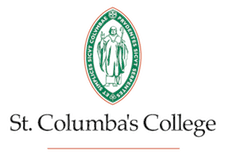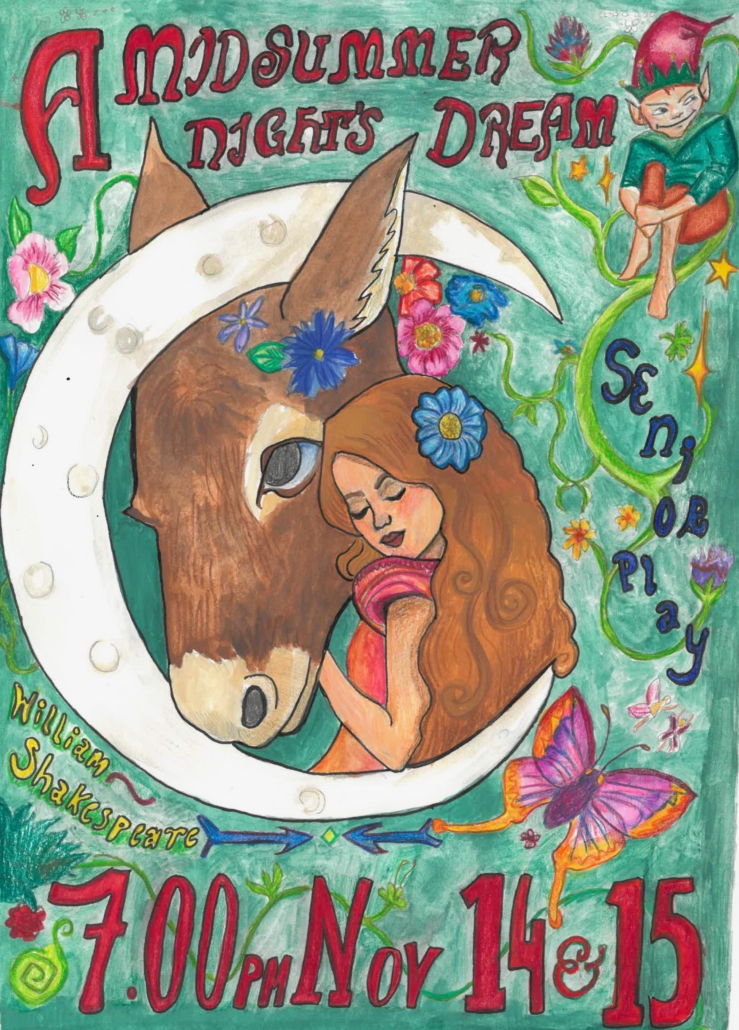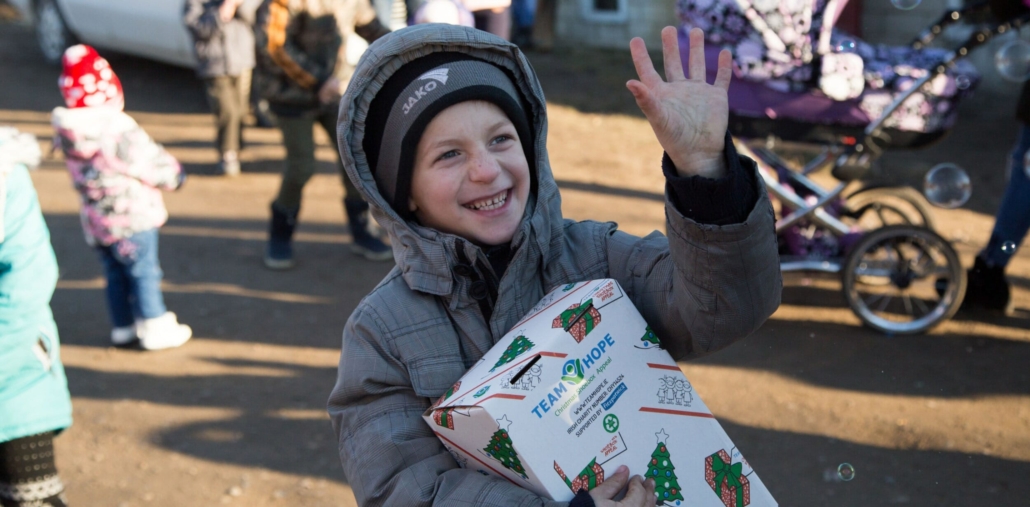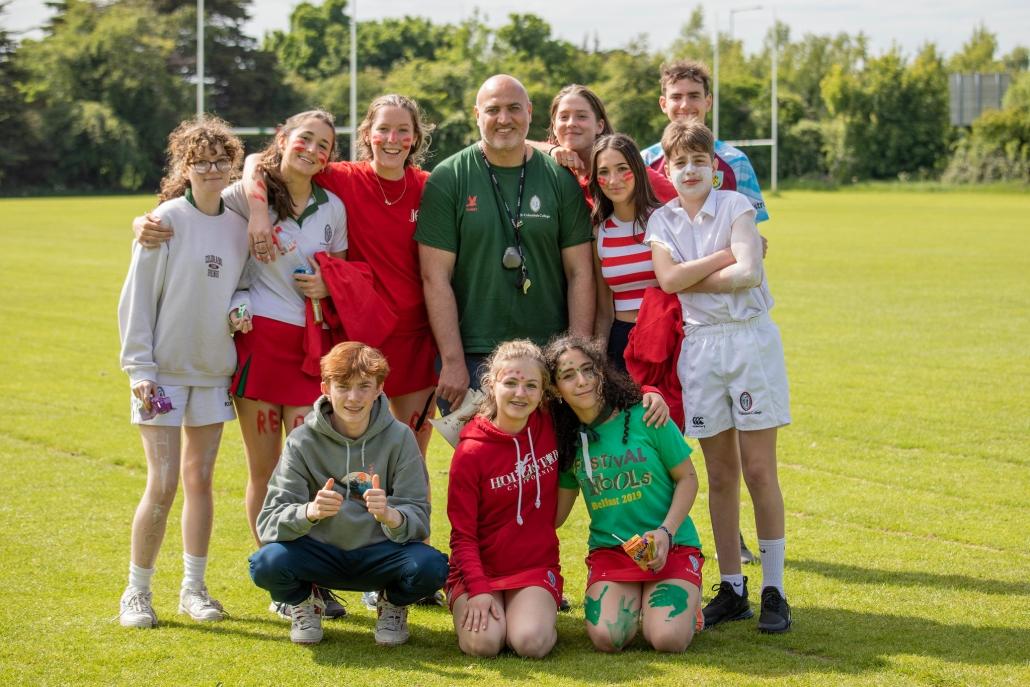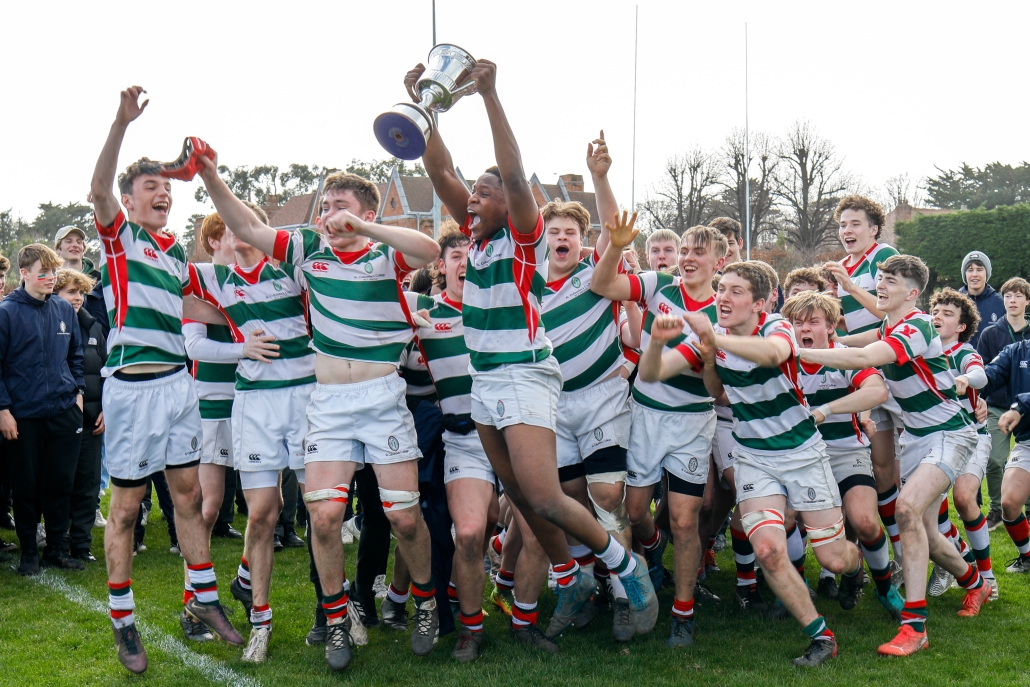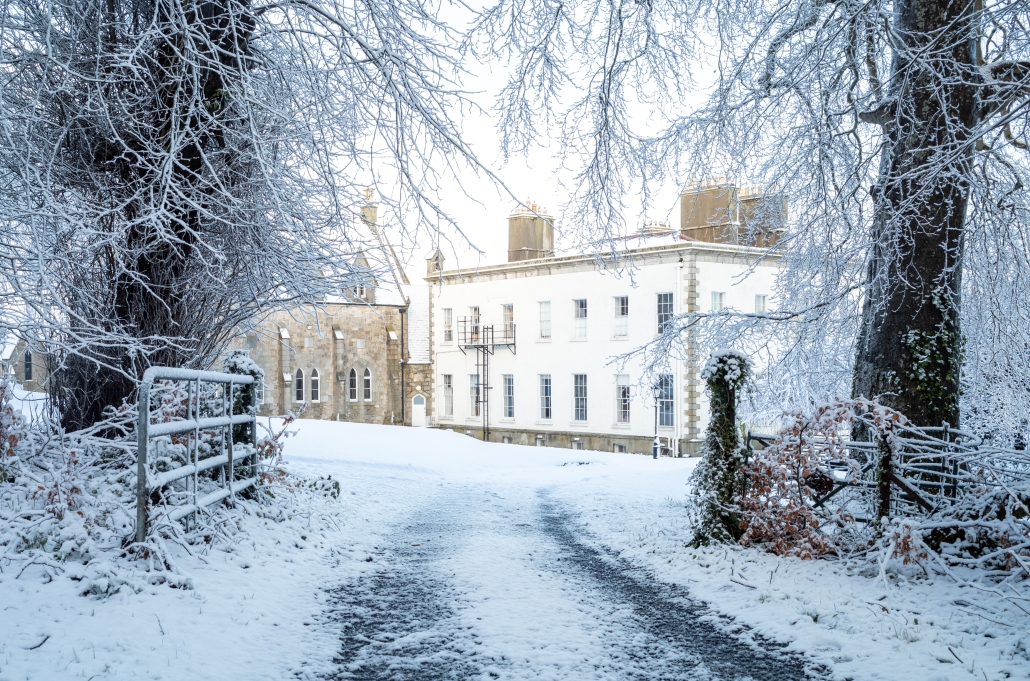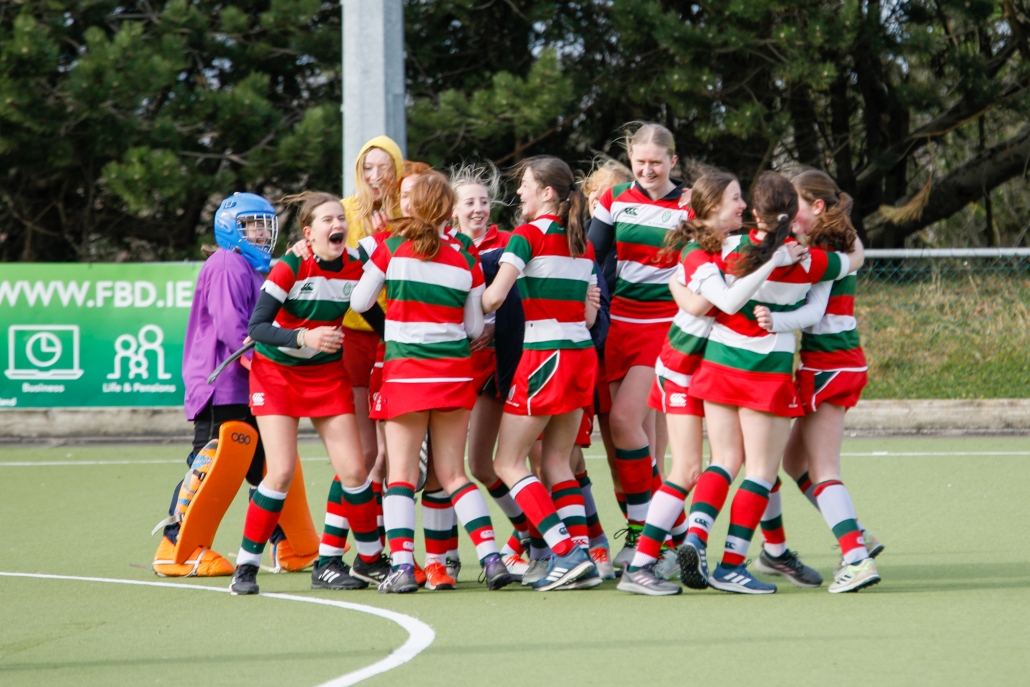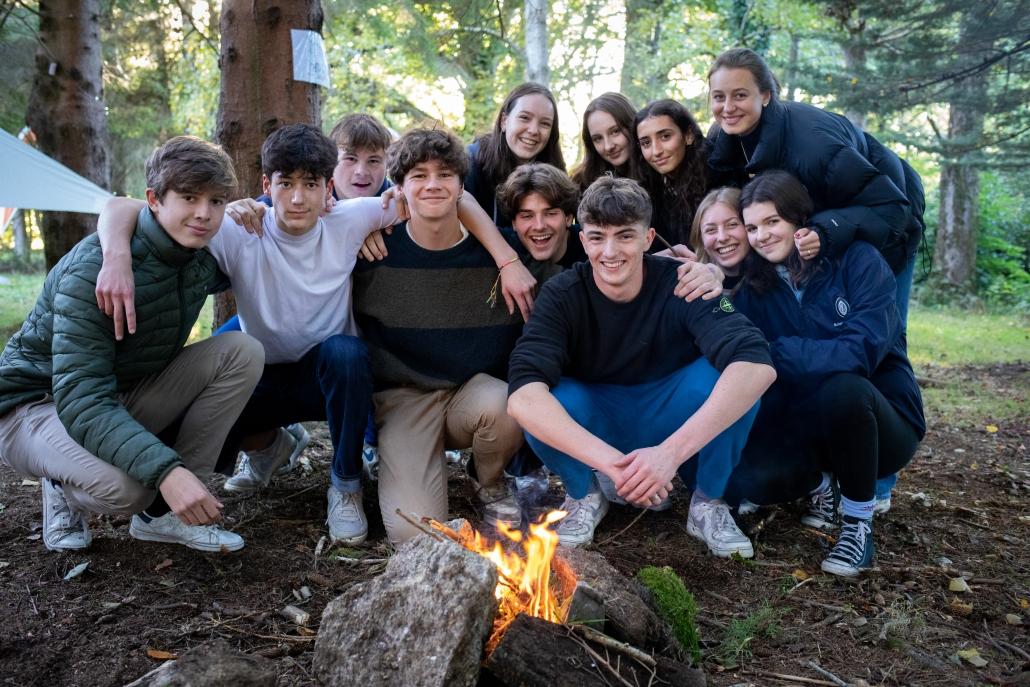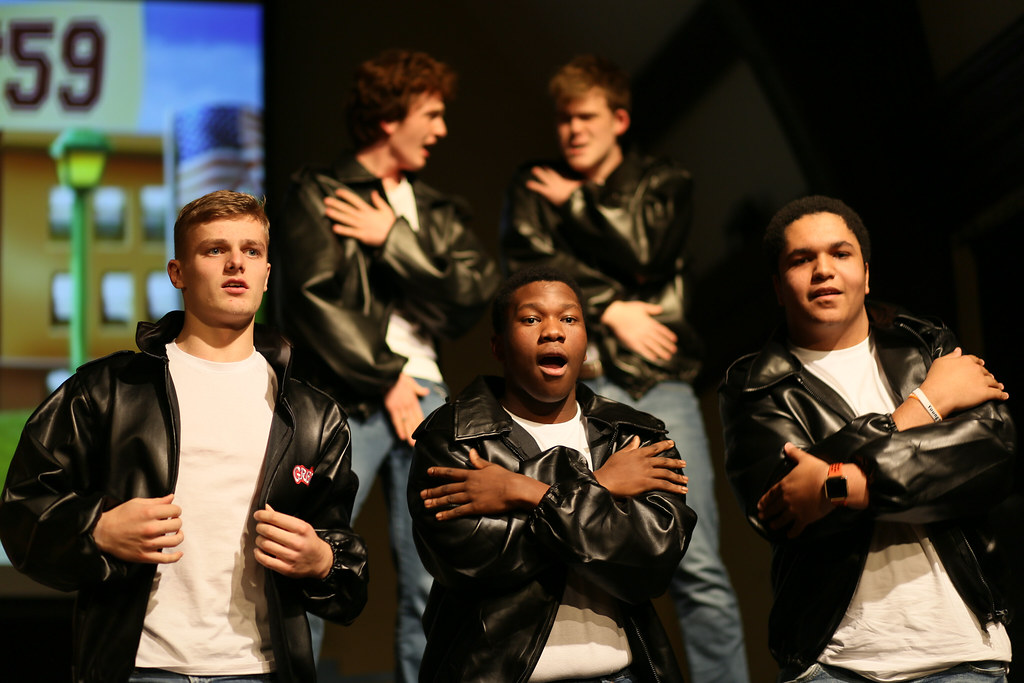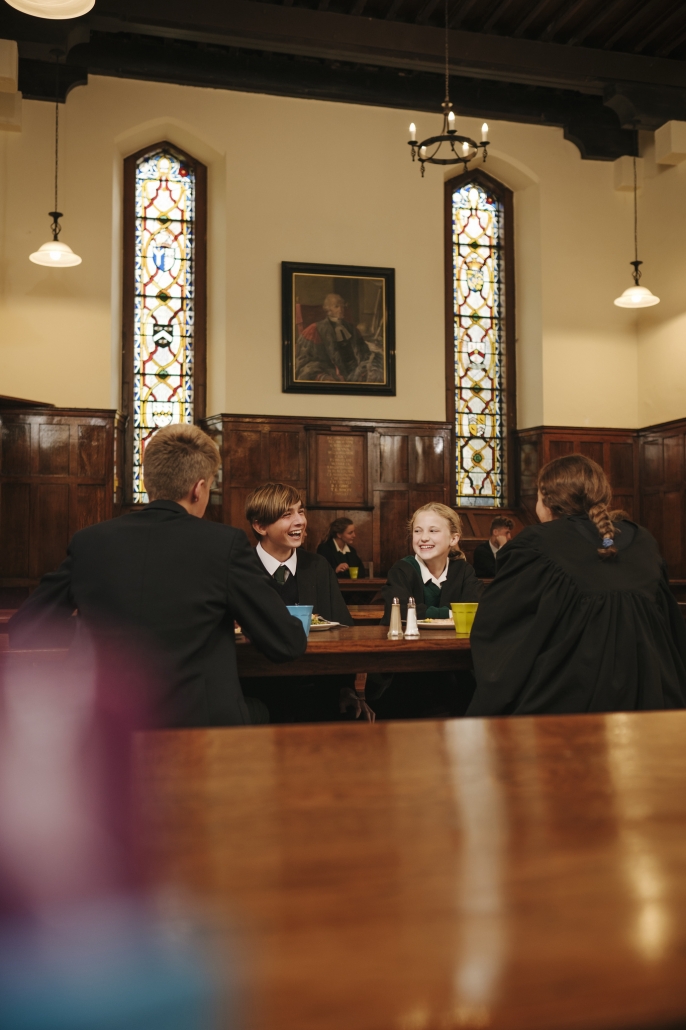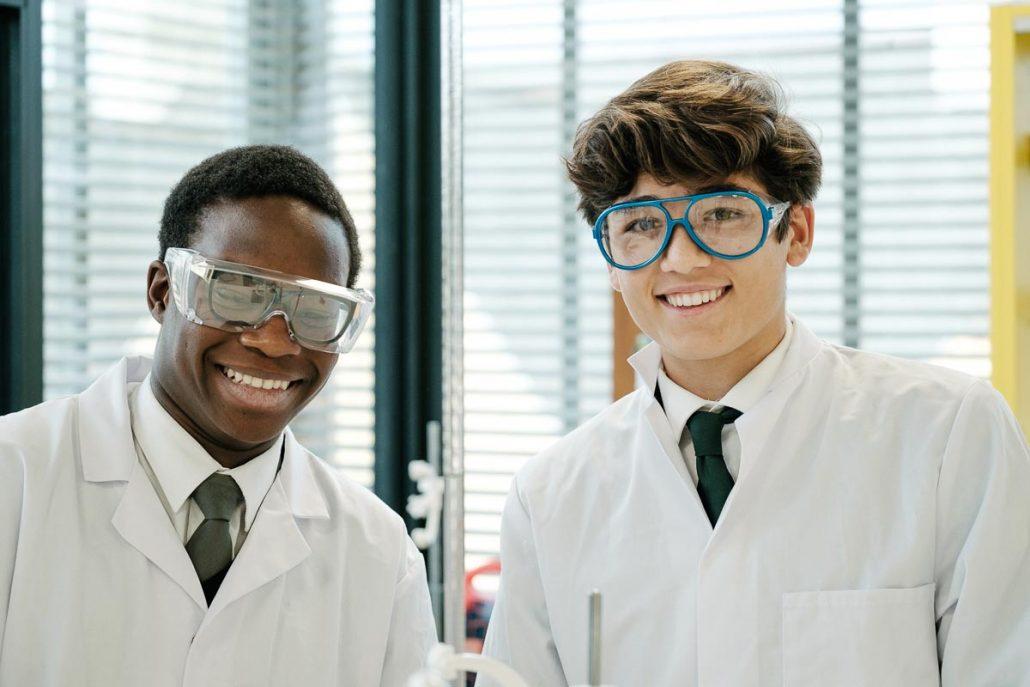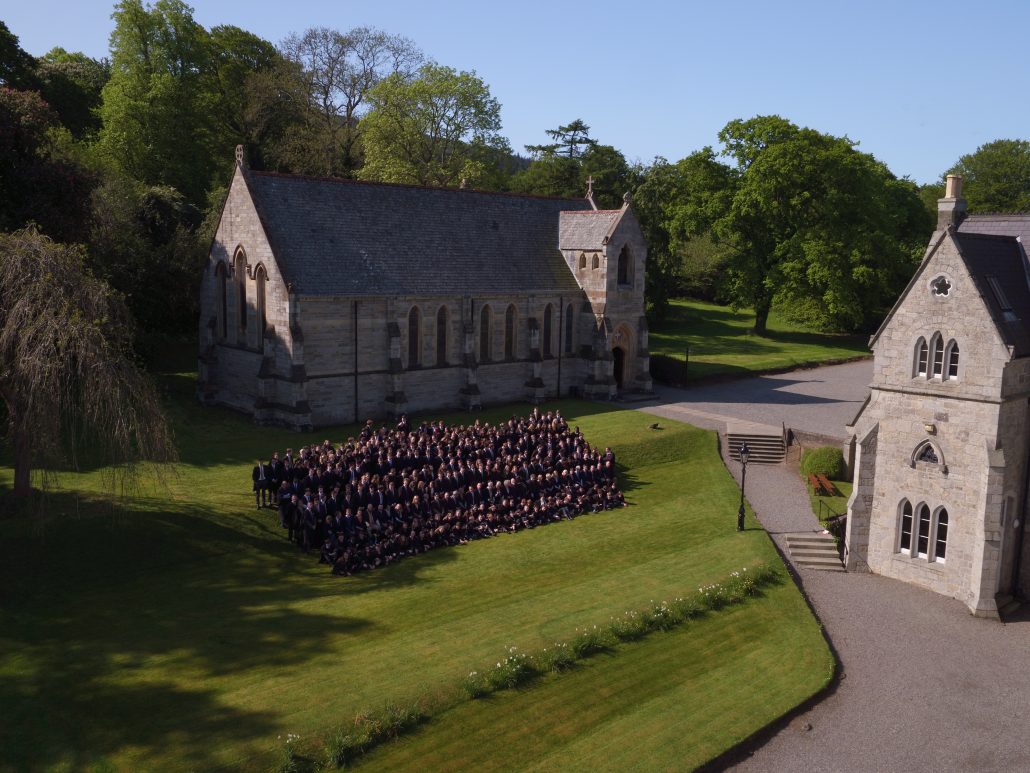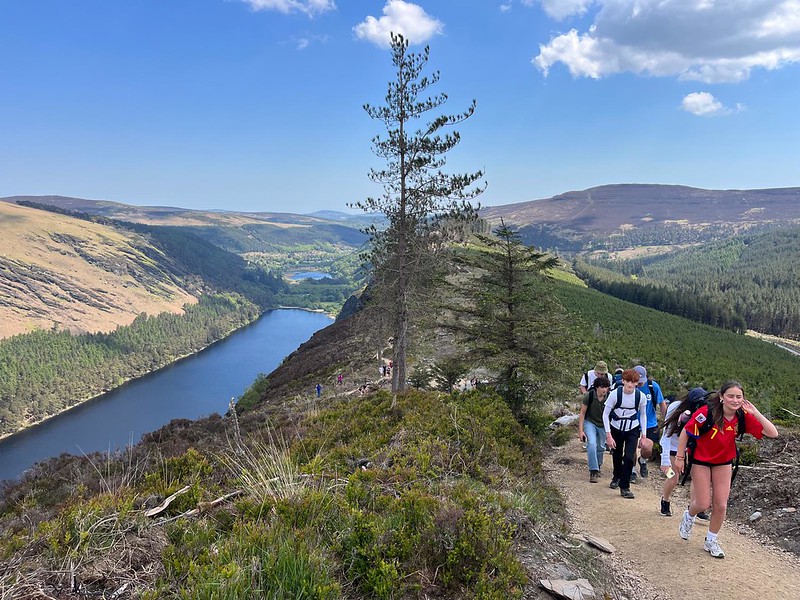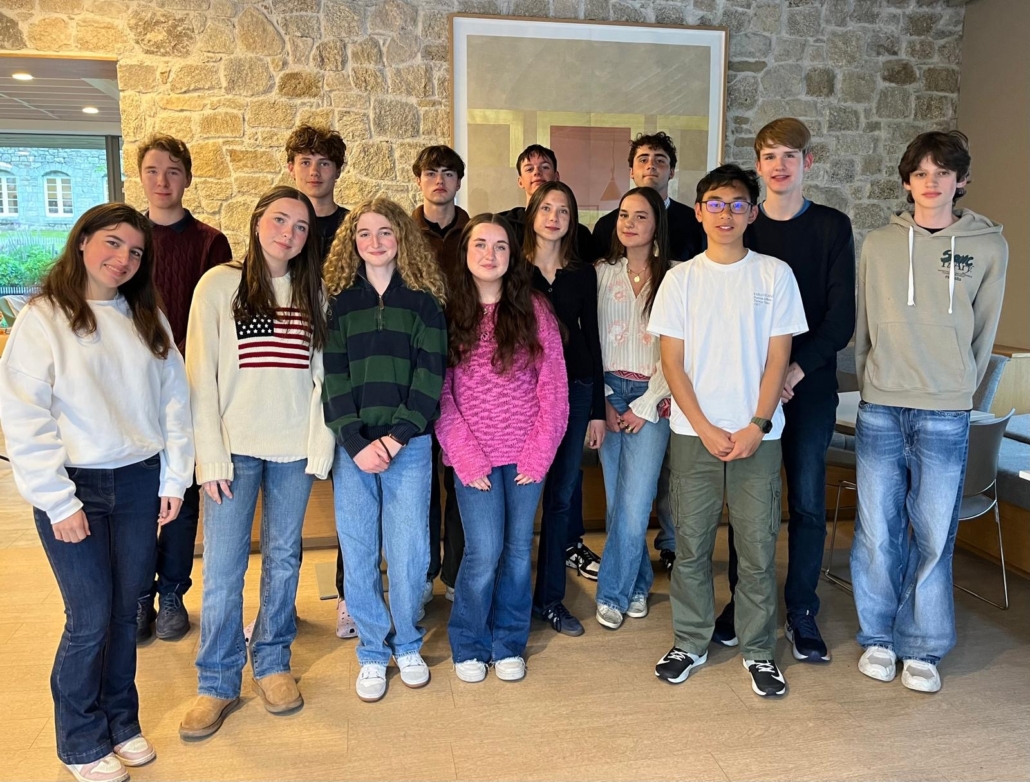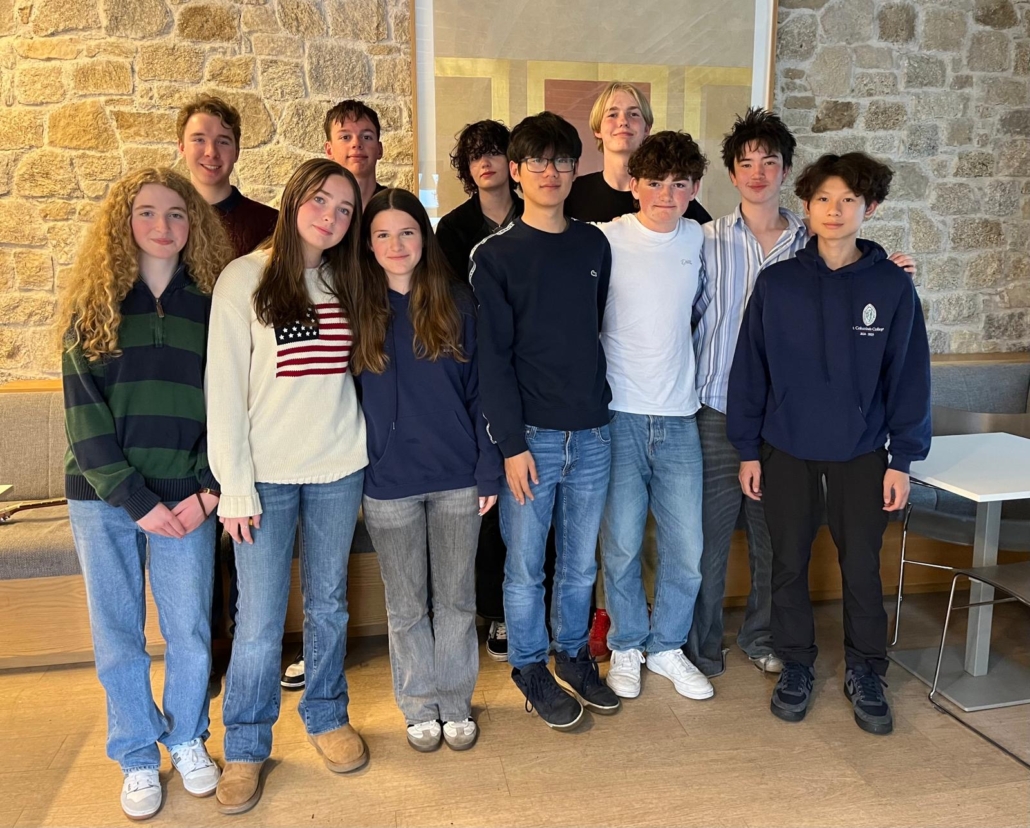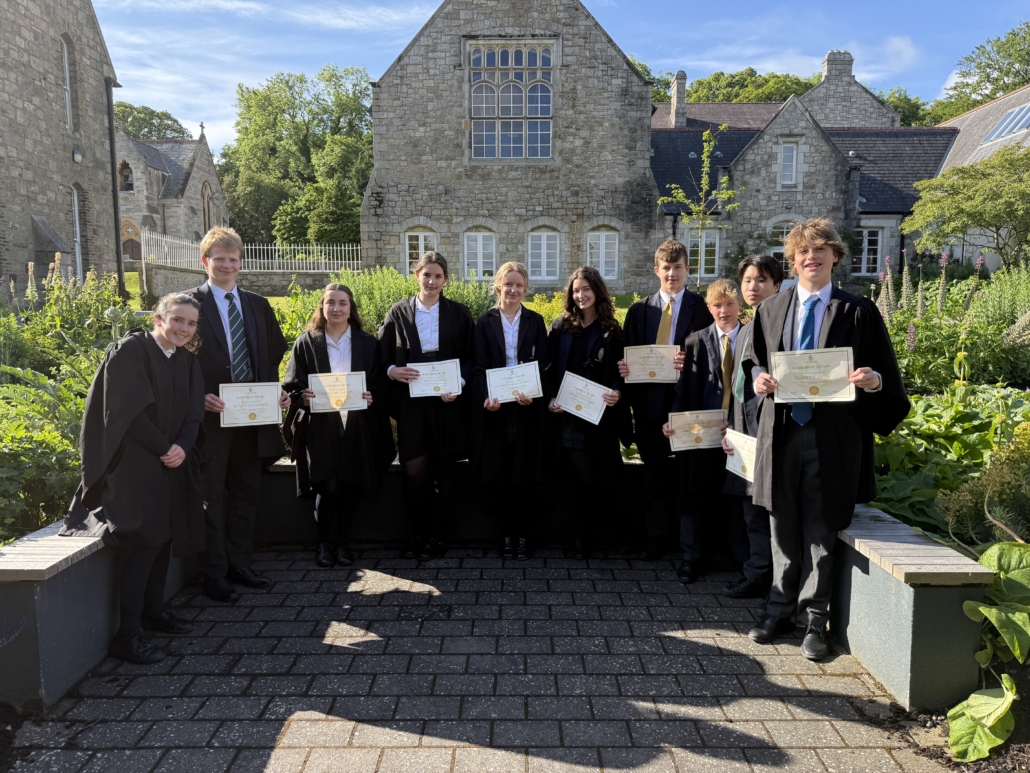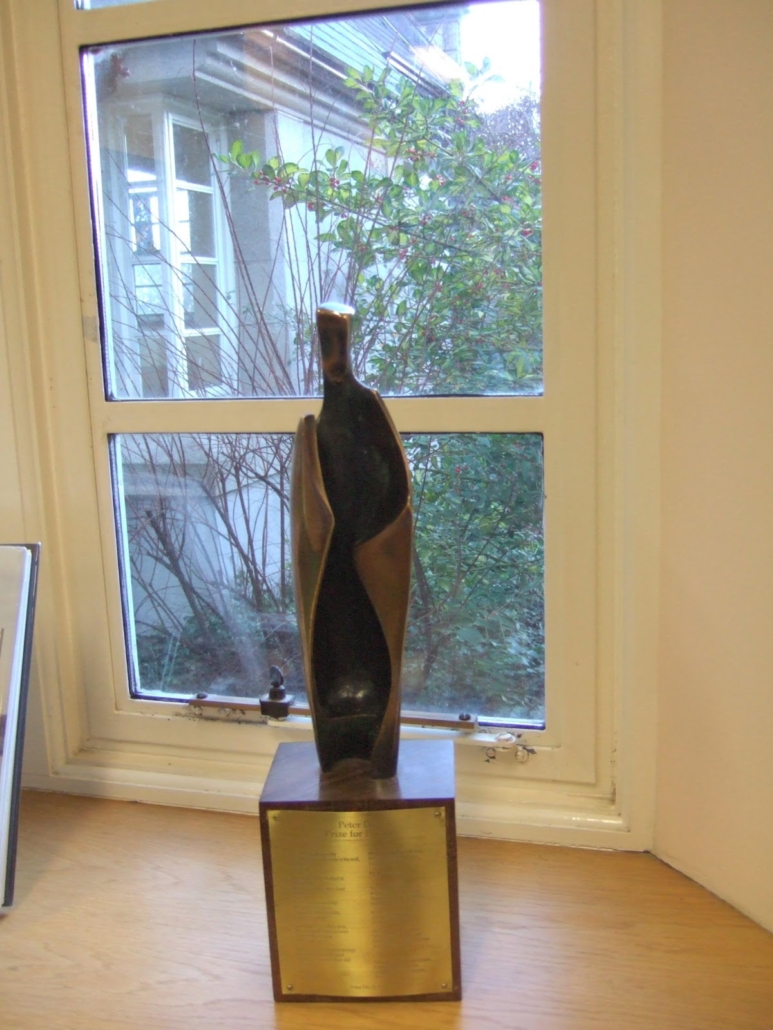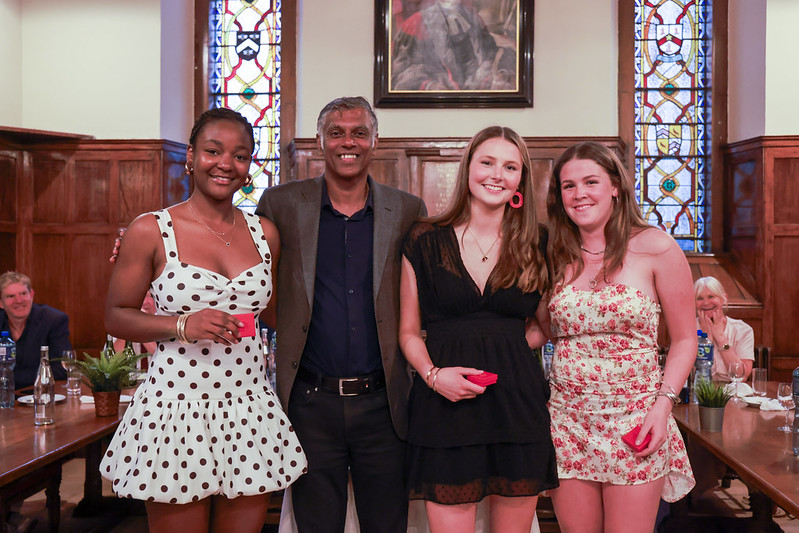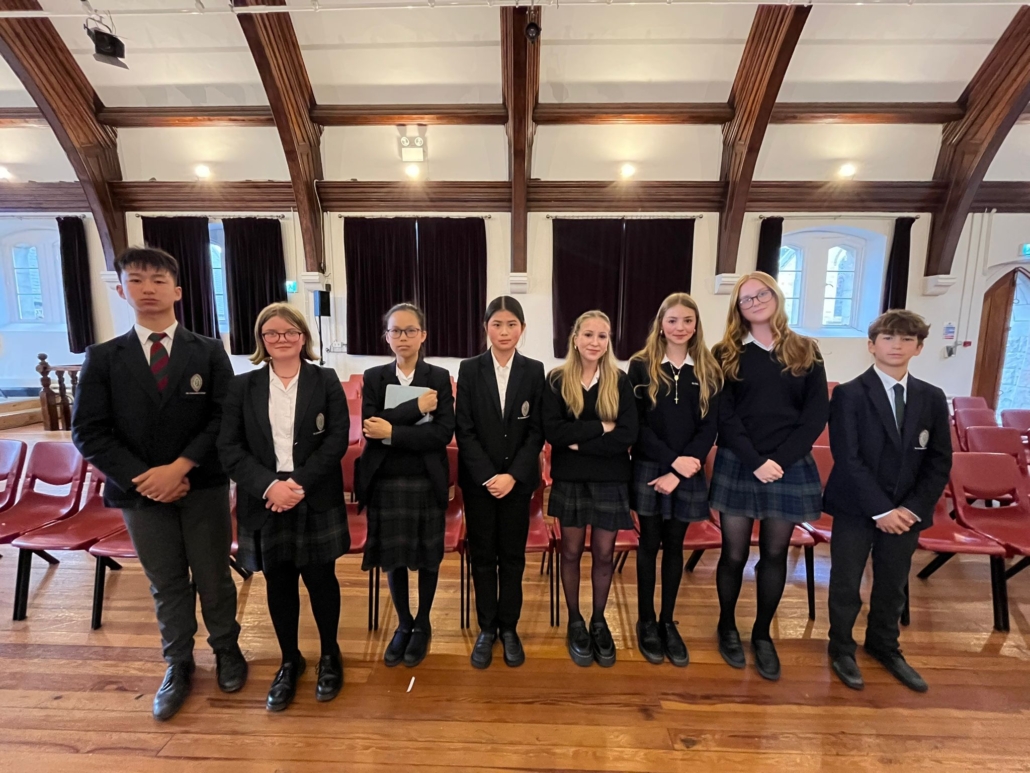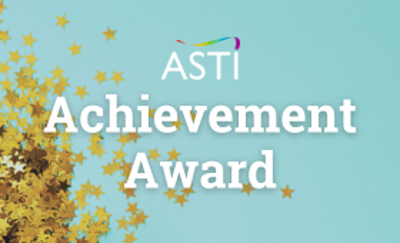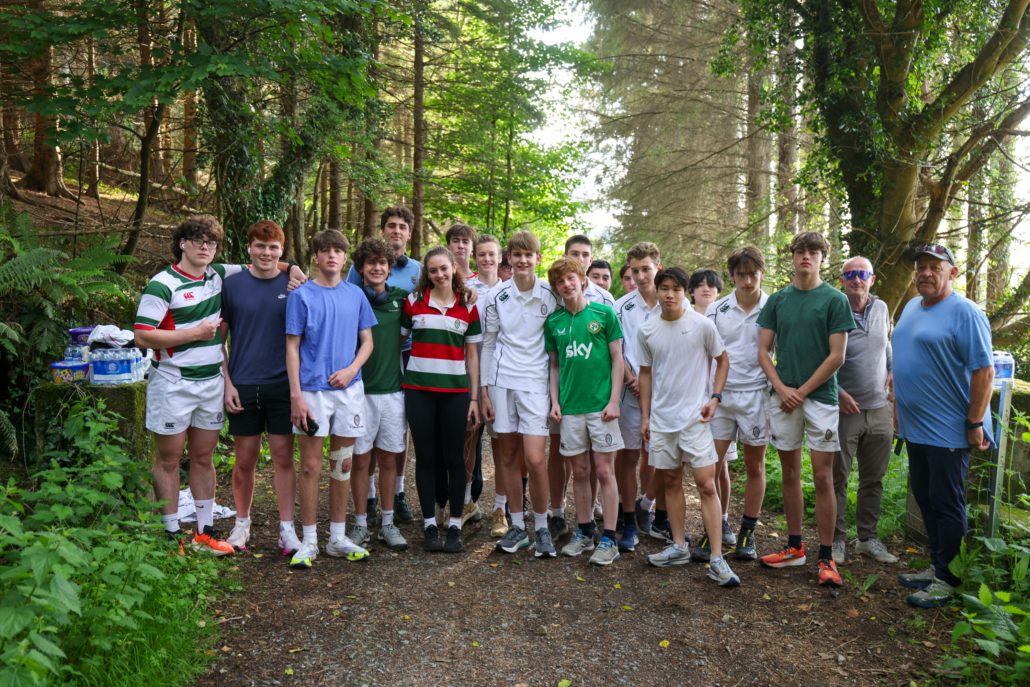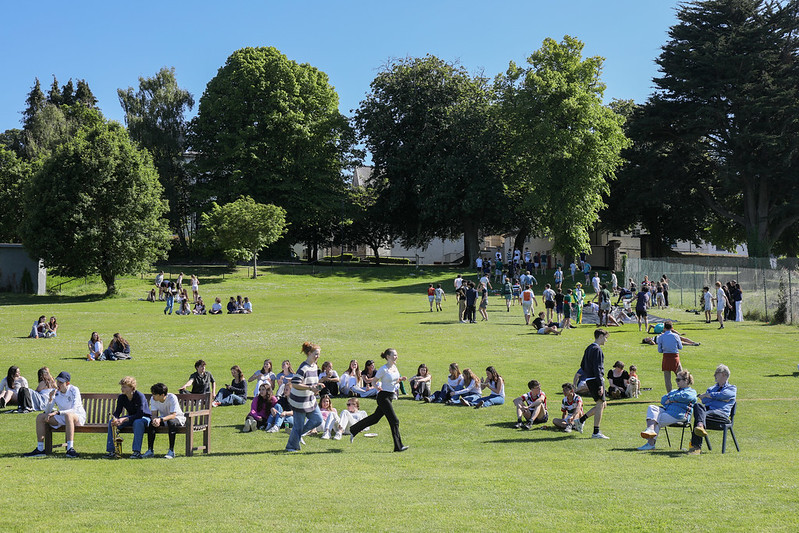From September 23rd to 25th we were visited by 30 final-year members of a school in Norway, Nadderud vgs on the outskirts of Oslo, along with two of their teachers. Each day they went to Chapel, attended classes with our Sixth Formers, experienced Dining Hall and much else, culminating in a joint supper in Whispering House on the final evening, where a group made a presentation on life in Norway.
Here are three accounts; many thanks to the writers, and their teacher Elaine, for permission to publish these. It was lovely to host this group in Dublin.
Our Visit to St. Columba’s College – An Experience We’ll Never Forget
From Jacob
In September our English class travelled to Dublin, and one of the real highlights of the trip was visiting St. Columba’s College. It’s hard to describe how special the experience was. The school was unlike anything we had seen before, and the people we met made us feel incredibly welcome from the moment we arrived.
Driving up the long, tree-lined road towards the campus, we could already see this was a special place. The historic stone buildings, the green lawns, and students in uniforms and robes made it feel like stepping into a Harry Potter film. It was both surreal and fascinating, and we were immediately struck by the strong sense of tradition and pride that filled the school.
Before the trip, we had done some research about the school and its routines but seeing it in person gave us a whole new perspective. The students live on campus, start each day with a Chapel Service, and have shorter but more frequent lessons. It creates a good rhythm and keeps things varied. The morning Chapel service was especially memorable – calm, reflective, and clearly an important part of the school’s sense of community.
One of the things that impressed us most was how well-organised everything was. From classes to meals, everything ran smoothly. The fact that they have a hot lunch every day definitely caught our attention – and our envy. Sharing meals together gave the school a warm, family-like atmosphere. After lessons, most students take part in sports and activities, which are an essential part of daily life. It was inspiring to see how much energy and enthusiasm they put into it.
The students at St. Columba’s were genuinely friendly and curious. They asked about our school in Norway, what we study, and even about the weather at home. They included us right away, and we quickly felt like part of the group. We laughed a lot, had great conversations, and learned about what it’s like to live at a boarding school. Many said it can be challenging to be away from family, but it was clear that the friendships and sense of belonging made it worthwhile.
What made the biggest impression on me was how St. Columba’s combines tradition with a modern and open-minded way of teaching. There’s a clear structure and respect for rules, but also room for individuality, creativity, and humour. The teachers we met were passionate and proud of their students, and the atmosphere felt supportive and full of trust.
After the visit, we talked a lot about how different schools can be from country to country. In Norway, our school days are less formal and more flexible, while life at St. Columba’s is structured and community-based. Both approaches have their strengths, but seeing theirs in action made us reflect on what really makes a school a great place to learn. It’s not just about lessons and exams – it’s about belonging, shared values, and the people you’re surrounded by.
Our visit to St. Columba’s College was truly unforgettable. We came home with new insights, new friendships, and a deeper appreciation for what school life can look like in another part of the world. The visit was inspiring, eye-opening, and a lot of fun. Most of all, it reminded us how powerful it is to connect across cultures and to learn from one another.
Thank you to all teachers, staff and students for an inspiring and unforgettable experience
From Klara:
Visiting St Columba’s was a great experience, and we all had a terrific time. Upon arrival we were led into their stunning chapel where we got to see their morning Chapel Service. One thing that stood out during the service was the way the students entered and exited the chapel. The students all knew when it was their turn to walk out, and they had a symmetrical routine that was quite mesmerising to watch. We were then matched up with two students each whom we followed to class, and were shown around the school by. All the students I encountered were kind and welcoming.
I didn’t know what to expect when visiting the school. Would we have similar interests with the students, what did their daily routine work and schedule look like? Those were some of the questions my classmates and I discussed.
They have a very different school schedule than we do, but it actually seems to work very well. At most schools here in Norway we start our day around 8 am and we have 4 periods in a day, where all the classes are 90 minutes long with a 5-minute break after 45 minutes of the class. But at St Columba’s they have 6 classes a day where each class is 45 minutes long, then they had mandatory sport and designated time to study in their library. After spending the day with the students and getting to spend hours having pleasant conversations with some of the girls, some of us admitted that we could have considered attending the school ourselves.
We had quite different expectations before we learned what it is really like attending this school. Even though they spend a lot of time working on their studies, which can be challenging, they had a really nice community there. I didn’t get the impression that there were any “cliques”, and it seemed like all of the students were close friends. This is quite different from our school where there is a lot more pressure put on status and being “popular”. It’s nice seeing how the girls live together in dormitories, and all are friendly with each other.
A unique part of the school is the uniforms, and I was frequently asked questions about what I thought of it. And to be honest, I quite like it. The cape is very unique and not common in Irish schools. Having a uniform makes the students more equal, it doesn’t create competition or other issues with wearing your own clothes to school. It creates a community, and I think that’s quite nice.
Overall, I had a great time at St Columba’s, and we are so grateful that we got the opportunity to come and visit. I also hope the school enjoyed having us. St Columba’s is a unique school with a lot of history. We had a lovely time, and I hope we can meet the staff and students again.
From Linnea:
Before our visit to St. Columba’s College in Ireland, our class spent time preparing for the trip. We researched traditions and the school’s academics to better understand what to expect. In addition, we studied Irish Culture, Geography, and even explored the country’s political system to gain insight into how it’s different from Norway’s. These preparations made us more confident and curious about experiencing St. Columba´s.
When we arrived, we were warmly welcomed by both teachers and students. Each of us was paired with two or three students from the school who guided us throughout the day, making us feel comfortable and included from the very beginning. The visit started with a Chapel service early in the morning, which was memorable. We watched all the year groups enter in an orderly procession, accompanied by beautiful church music. Singing together in the chapel was a special experience that gave us a glimpse into one of the school’s traditions.
Throughout the day, we noticed how disciplined and engaged the students were. It was clear that they took pride in their school, studies and traditions. We were particularly impressed by their academic level and how organised their routines were. During the lessons we attended, we noticed that teaching methods were quite similar to those in Norway, but the classes were smaller. This allowed for closer follow-up between teachers and students, creating a more personal and interactive learning environment. Many of the lessons felt like open discussions, where students were encouraged to express their opinions and think critically, something we found interesting. Later, we had the chance to watch a field hockey session after school. St. Columba’s has its own school teams, and it was fun to see the students’ team spirit and enthusiasm.
The food served at the school was simple but nutritious. We appreciated how each meal was offering healthy options that suited many. The dining hall had a warm and friendly atmosphere with long wooden tables. Sharing meals with the Irish students gave us another opportunity to talk, laugh, and learn more about their daily routines.
Surrounded by green fields and old stone buildings, the school had an atmosphere that felt historic and peaceful. The dorms were organized into different houses, each with its own spirit. The gardens were beautiful, full of colourful flowers, and trimmed lawns. It was easy to see that much care went into maintaining the school’s beautiful surroundings.
What stood out most, however, was how friendly and welcoming everyone was. The students made sure we felt included and part of their school community, even for just a short time. Overall, our visit to St. Columba’s was an unforgettable experience. We left Ireland with great memories, new friendships, and an appreciation for both our similarities and our differences. Thank you for an unforgettable exchange. We hope to welcome you to Norway in the near future.
